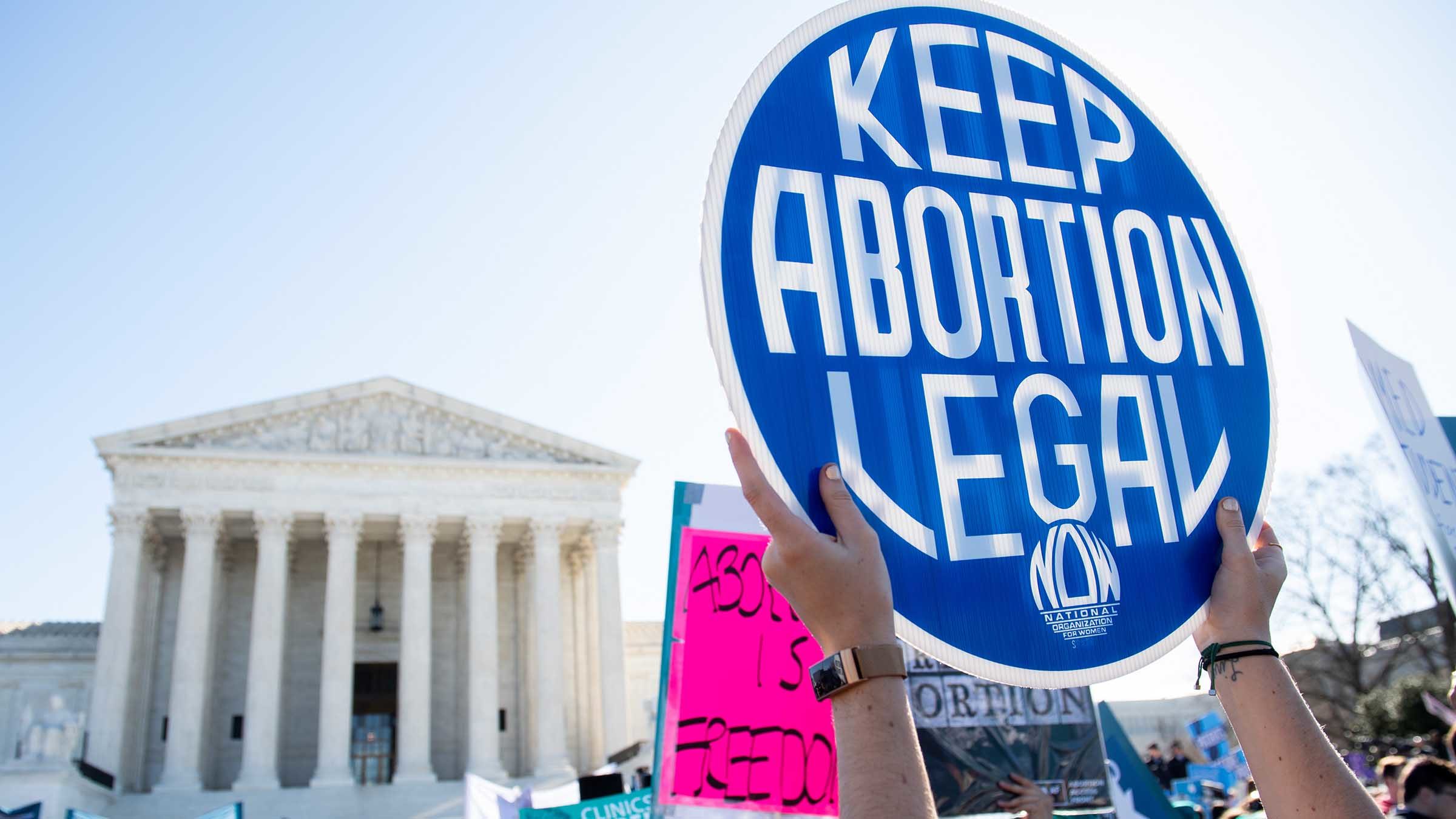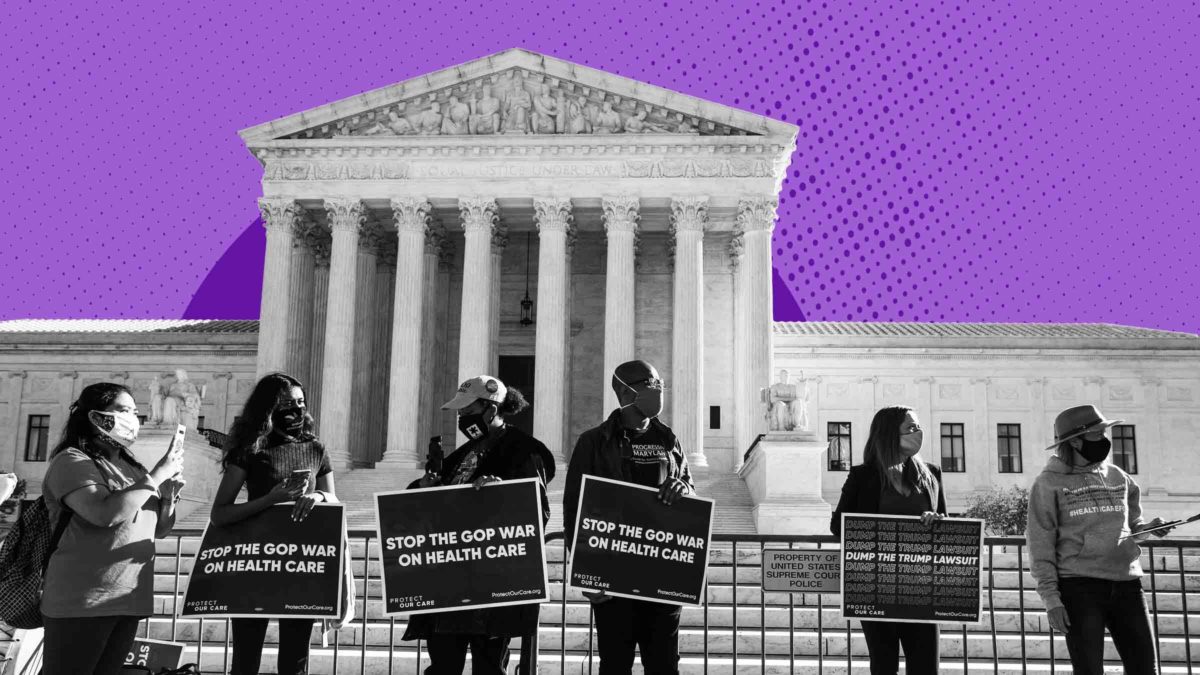The Supreme Court recently announced that although it will hold in-person oral arguments again when the new term begins this fall, the building itself will not reopen to the public. Instead, the Court will continue live-streaming the audio of its arguments, as it began doing in May 2020 as a response to the COVID-19 pandemic.
This is great news, and not only because the pandemic is still very much in progress, and more than half the justices are older than 65 and probably should not spend long periods of time in crowded indoor settings. Previously, the only way to hear a live Supreme Court oral argument was to attend in person—a miserable experience that, on a good day, was like getting sent to the headmaster’s office in a particularly rigid reform school. Every detail of the process seemed designed to emphasize to visitors that the law values strict adherence to arcane rules above reason, equality, transparency, and the well-being of people whose lives are subject to it.
The first time I attended a Supreme Court oral argument was in the summer of 2002, when I was a bright-eyed law student working for a nonprofit in D.C. I can’t remember which cases I saw, but I do remember the gauntlet of absurd rules I had to follow in order to get there. Excited to see the justices in action, I arrived at the courthouse before dawn, ready to watch the sun come up as I waited in line in the huge marble plaza. I knew I would need to wait for several hours, so I sat down.
Immediately, a security guard wearily shuffled over to tell me I was not allowed to sit. Huh? Did they think butts would scuff the ground? Would the marble statues overlooking the plaza be offended, even though several of them are themselves sitting? I had plenty of time to ponder as I stood there, shifting from one foot to the other, until the Court opened.
As it turns out, sitting isn’t the only thing banned on the Court’s plaza—you also can’t protest, or even hold signs. You might think that demonstrations criticizing the work of public officials are First Amendment-protected activities, and that it would be “ironic indeed if an exception to the Constitution were to be recognized for the very institution that has the chief responsibility for protecting constitutional rights.” If so, congratulations: you agree with Justice Thurgood Marshall, who wrote that in his partial dissent from a 1983 decision, United States v. Grace. Although the Grace majority held that a federal law barring protests on Court grounds was unconstitutional if applied to the sidewalks around the Court, they did not agree with Marshall that the entire law violated the First Amendment. The uptight statues on the plaza could continue to rest easy; no pesky free expression would invade their domain.

The sidewalks weren’t reserved for demonstrators, however. Before the pandemic, they would fill up with people who were willing to camp, sometimes for days, to secure a seat in the courtroom for oral argument in a high-profile case. In the snow or rain, people brought sleeping bags and tarps, transforming the sidewalk into a judicial Fyre Festival. Many of these people were not the ones who actually wanted to see the oral argument. Instead, they were paid line-standers: Law firms, businesses, or other D.C. types with money burning holes in their suit pockets paid up to $50 per hour to line-holding companies to have someone wait for them, and then turn over the coveted spot the morning of the argument. At least some of the line-standers, according to The Washington Post, were people experiencing homelessness; they were presumably paid less than $50 per hour.
The practice of allowing line-standers persists despite a Court guideline that asks attendees not to “hold a space in either line for others who have not yet arrived.” In 2015, after a number of articles pointed out that it was a bad look for the Court to allow access to be sold to the highest bidder, the Court changed its rules to explicitly prohibit line-standers in the “bar line”—a separate queue reserved for lawyers who are members of the Supreme Court bar. But the practice remains for the “public line.” Many other public institutions in D.C.—museums, public schools, the White House Easter Egg Roll—use online reservations or lottery systems to distribute tickets without Midnight Before Black Friday at Best Buy-style crowds. But the Court prefers to ignore its own directive in favor of an apparently more important, unwritten rule that wealthy people should have more access to the Court than others.
Access to the “bar line” was one of the only perks of membership in the Supreme Court bar. Although this designation may sound fancy, any lawyer who has been practicing for three years can join the club by paying $200 and securing the endorsements of two other Supreme Court bar members. It’s like the Economy Plus section on an airplane: it exists so those who are able to pay for it can feel a little more comfortable and a lot more important than those who cannot. (Like Economy Plus travelers, bar members get to sit in a separate area of the courtroom that is closer to the front, and features merely uncomfortable chairs rather than really uncomfortable benches.)
Here I must admit that I am a member of the Supreme Court Bar, which I joined so I could get sworn in on the day of oral argument of a case, Young v. UPS, in which I’d worked on an amicus brief submitted by several unions. Getting sworn in is supposed to be an honor, and it also serves as a one-time-only coupon for a guaranteed seat. But I only remember being nervous about the argument to come. My membership also enabled me to attend oral argument in Janus v. AFSCME—a landmark 2018 case in which the conservatives tried to gut public sector workers’ ability to form strong unions—without having to wait in line starting at 3 A.M. While sitting and watching as the Court attacks an institution that improves lives for workers, reduces income inequality, and strengthens democracy, it’s nice to have at least gotten a full night’s sleep first.
If you made it past the line(s) and into the Court building, there were more inane rules. You couldn’t bring your phone or any reading material into the courtroom. Even before the argument started, you couldn’t speak above a whisper or stand up. You had to just sit, quietly and with nothing to do, staring way, way up at nine empty chairs until the justices came out from behind the curtains.
The justices could significantly reduce the demand for in-person spots at oral arguments—and, more importantly, allow millions more people to see how the third branch of our government operates—by permitting arguments to be televised or live-streamed with video. But the justices have long refused. Some of their proffered rationales have been downright offensive. Justice Sonia Sotomayor, generally the Court’s most progressive member, said in 2014 that she opposed cameras in the courtroom because she feared the public would not understand what was going on: “I don’t think most viewers take the time to actually delve into either the briefs or the legal arguments to appreciate what the court is doing,” she said.
Testifying before a House subcommittee in 2019, Justices Samuel Alito and Elena Kagan were inconsistent in their stories but unanimous in their opposition to video coverage. Alito said the justices had collectively agreed that cameras should not be allowed because the attorneys who argue before them would grandstand. Kagan apparently was not part of that chat, since she said the justices hadn’t discussed the video issue since she joined the Court. But she agreed that cameras were a bad idea because, she said, the justices might self-censor out of concern that their “devil’s advocate” questions would be taken out of context. You might think it wouldn’t be the worst thing if the justices avoided saying things that could cause offense or make them appear biased. Also, given that Justice Amy Coney Barrett recently promised that the justices are not “partisan hacks” alongside Senate Majority Leader Mitch McConnell at a center named after McConnell, the idea that the justices would meaningfully alter their behavior because of the appearance of impropriety feels dubious at best.
The pandemic gave the justices the push that they needed to allow the public to at least listen to oral arguments as they happened. For the first time, people across the country and around the world could follow along in real time without needing to travel to D.C., wait for hours or days in the hopes of getting a spot, and endure the litany of small indignities that the Court imposed on visitors. The change made the Court’s processes more democratic, transparent, and accessible—probably the only one of its decisions in recent years that can be described with those words.
The Court hasn’t yet announced how long audio live-streaming will continue. But making it permanent is the least the Court should do. Taking the plunge into the mid-20th century by allowing live video streaming, too, would enable anyone to watch oral arguments from their couch without paying a line-stander or waiting for hours in the dark. The justices’ desire to maintain some degree of anonymity is not a sufficient reason to deny a nation the ability to watch the process by which so much of its public policy is made. Many, many people beyond the chummy fraternity of Supreme Court litigators and a handful of exhausted law students care about what the Court is doing. Even when spectators can finally return to the Court, there’s no good reason for the justices to keep standing in the way of progress.

